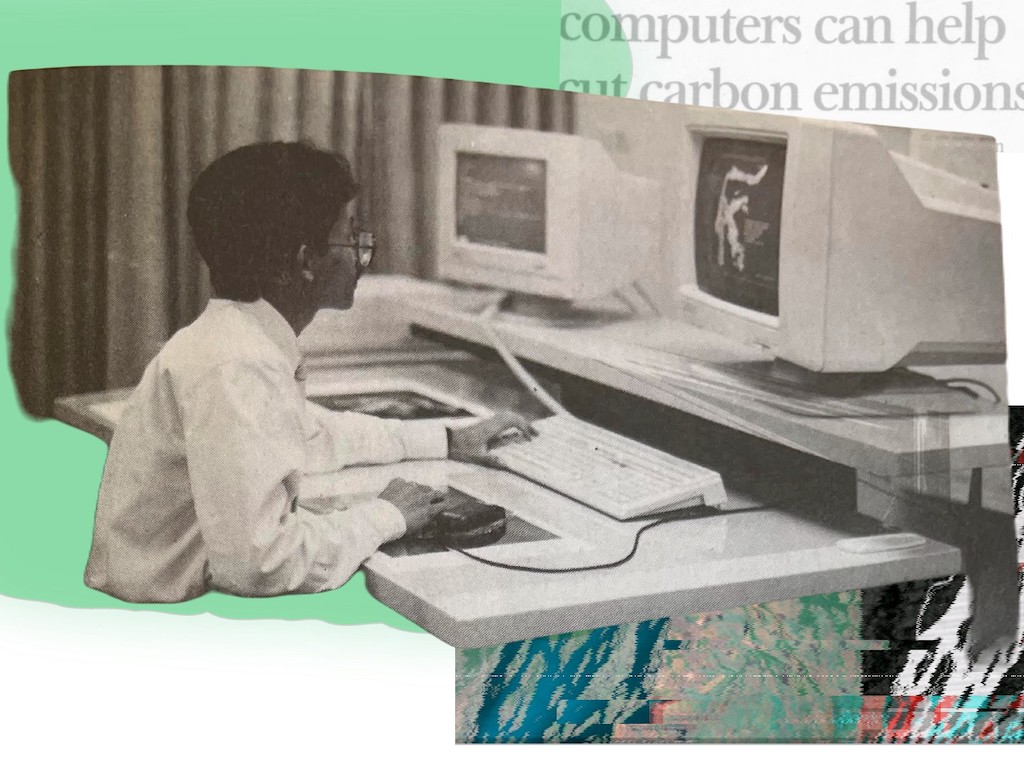
Environmental and climate justice coalitions have long identified problems with how words function in industry-oriented environmental projects and how language is used to advance false solutions to climate change. There are no quick-fix “solutions” to climate change. There are only responses, some of which can mitigate the effects of unabated natural resource extraction, and some of which may actually increase the damage and the unequal impacts of climate change. Computationally intensive carbon accounting and carbon capture projects are no exception.
Words in computationally intensive climate projects are particularly prone to manipulations because of their apparent technical complexity. We consider the computational meanings of Net Zero. The term Net Zero, in both literal and figurative uses, allows politicians, intergovernmental organizations, and tech enterprises to treat climate resuscitation as a highly quantifiable, calibrated, and data-intensive operation.
Net Zero definitions
There are many different definitions of “Net Zero.” These range from quantitative measures in computationally intensive projects to vague descriptions in corporate PR. The oldest known use of zero occurred in India, found in the famous ancient Indian scroll, the Bakhshali manuscript, widely known as the oldest mathematical text. Initially used as a placeholder dot symbol, zero is now central to modern counting and digital systems operationalized in binary code and as a placeholder in logarithmic systems.
Today, zero finds itself partnered with the term “net”–a financial accounting term denoting balance and erasure– and is used widely and loosely by investors, tech companies, and mainstream environmental organizations to signify responsible climate practices after balancing the carbon budget.
For scientists and intergovernmental organizations like the United Nations, “Net Zero” refers to the need to keep the release of carbon dioxide to a finite amount. Any additional emission has to be balanced with a blend of emissions reductions and offsets activity (UN). For policymakers, Net Zero has been variously interpreted by different countries, with critics in consensus that Net Zero projects can be a distraction from “meaningful reductions in greenhouse gasses.”
The concept of Net Zero is pliable, giving countries and companies the discretion to interpret how they should meet climate targets. Perhaps what is most striking in Net Zero debates is who has the ability and resources to calculate emissions and engage in the purchase and development of emission reduction technology.
Accordingly, scientists from major academic research institutes and intergovernmental bodies have critiqued developing countries for producing incomplete, inconsistent, or delaying or underreporting emissions (Mooney et al., 2021). Yet, as both scholars and advocates of environmental justice have long argued (e.g. Lennon et al., 2021, Dayaneni 2009, WALHI, 2022), there is a global imbalance of carbon emitters, with 23 rich developed countries responsible for half of all historical CO2 emissions (Global Carbon Project, 2021). Herein is where improvement in technology and technical expertise are regarded by governing bodies, policy makers, and industry as uniformly positive for Net Zero.
Net Zero presumes that the violent and extractive history of industrial capitalism is an equally shared history that can be accounted for through balancing a carbon budget. The base ambition of quantifying and cutting GHG emissions to as close to zero as possible has spawned more elaborate computational programs.
Net Zero presumes that the violent and extractive history of industrial capitalism is an equally shared history that can be accounted for through balancing a carbon budget.
Net Zero Innovations
Variegated computational definitions of Net Zero correspond to varigated practices and outcomes of Net Zero. As one of our co-authors Theodora Dryer describes, “… [Net Zero] is a goal or projected benchmark—it is not a theory of change.” This means that the how or the real-world processes undergirding these Net Zero ambitions remain subject to the interests enacting and benefiting from them. The computational definition of the term Net Zero depends on the specific context in which it is being used, and calculations can conceal who wins, loses, and profits from combinations of new tech, offsetting, and continued emissions.
Across contexts and localities Net Zero is quantified, calculated, and computed in different ways and to different ends (e.g. Rogelj et al., 2021; Fankhauser et al., 2021; Bataille, 2009; Sun et al., 2021). In this way, Net Zero definitions correlate to a broad suite of Net Zero computing projects. These include mega computational mapping infrastructures like Google Earth Engine for guiding Net Zero climate action. Google Earth Engine promotes itself as a free geospatial data analytics platform for scientists in the Global South to perform computing-intensive climate simulations and extensive forest monitoring in countries that lack such climate research (Google, 2023; Callaghan et al., 2021). But as detailed by one of our co-authors, Cindy Lin, its widespread use in Indonesia has led to increased competition with public research institutions that are now required to provide the same services but with far lesser resources (Lin, 2022).
Other tech enterprises understand Net Zero as a big data project and opportunity for data innovation. In this view, Net Zero is a mega GHG emissions tracking project that requires the expansion of data centers, data analysis, and other “sustainable tech” infrastructures. These big data and cloud projects work to track carbon in the world’s climate system just as they promise to simultaneously manage and reduce the climate impact of their own natural-resource intensive data development infrastructures.
Another dimension to Net Zero computing is innovation in modeling and data analysis. Many of these projects operate under the assumption that digital innovation is crucial to the “Net Zero transition.” In this realm labor and resource-intensive computer vision, machine learning, and artificial intelligence programs are being developed for greater efficiency and speed towards an incalculable Net Zero future. As such, tracking the various computational definitions of Net Zero clarifies how it actually works and the kinds of expertise and technologies they mobilize.

